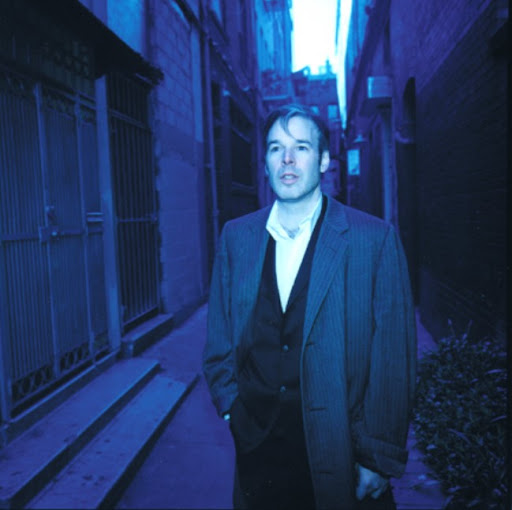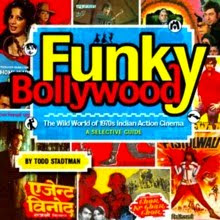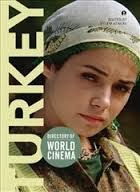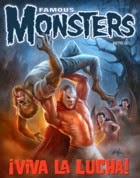Vynalez Zkasy (released in the U.S. as The Fabulous World of Jules Verne) may represent Czech FX pioneer Karel Zeman’s quest to emulate the style of 19th century fantasy illustration—to the end of presenting the future through a Victorian lens—at its most extreme. That does not mean that it is any less fascinating than, nor nearly enchanting as, films like The Stolen Airship and Cesta do Praveku/Journey to the Beginning of Time. It only means that there is a vague miasma of obsession that threads through the movie’s general air of wonderment.
Like The Stolen Airship, Vynalez Zkasy is based primarily on one of Jules Verne’s novels (in this case 1896’s Facing the Flag) while liberally borrowing elements from another (in this case, most noticeably, 20,000 Leagues Under the Sea). The story is narrated by Simon Hart (Lubor Tokos), the dashing young assistant to Professor Roch (Arnost Navratil), who, at the film’s opening, is confined to an insane asylum. It is during a dark and stormy night’s visit to that asylum that both Roch and Hart are kidnapped by a band of pirates lead by Captain Spade (Frantisek Slegr). Spade is in turn acting on orders from Count Artigas (Miloslav Holub), a wealthy scoundrel. You see, Roch’s current work has seen him unlock “the secrets of matter”, a discovery which he sees as only to the benefit of mankind, while Artigas sees its potential for providing the destructive power of a humongous gun which he will use to make the leaders of the free world wet themselves in fear.
Spade and his men herd Roch and Hart aboard their schooner and sets sail for Artigas’ hideout, which we eventually learn is housed, Blofeld-style, within a dormant volcano. On the way, they use a stolen submarine to ram unsuspecting merchant and passenger ships and rob them of their treasure. The scene of the pirates donning deep-sea diving gear and trudging across the ocean floor to pillage the hold of a sunken vessel provides the impetus for some delightful puppet animation, very reminiscent of the moon walking scenes in the Soviet silent Cosmic Journey. Zeman even throws in a fight with a giant octopus for good measure.
In the aftermath of one of their attacks, the pirates take aboard a comely female survivor, Jana (Jana Zatloukalova), whose obligatory role in Vynalez Zkasy is underscored by just how little she is given to do throughout the rest of the film. Once arrived at the hideout, Roch is quickly seduced into aiding Artigas in building his super gun, at which point Hart, no longer of use, is banished to a rundown shack on the outskirts of the villain’s high tech manufacturing facility—which begs the question of how a sharecropper’s cabin ended up inside a volcano. As for Jana, she immediately busies herself with tidying up around the place and, from that point on, is not seen without being in the midst of one of the many domestic chores that come up when one is confined within a cyclopean high-tech lair.
Being a guy, Hart doesn't bother to clean his hovel and instead tasks himself with finding a way to foil Artigas’ plan--while, of course, taking time out to put some gentlemanly moves on Jana. Eventually, he ties a note to a weather balloon and sets it assail. Normally, we would see this as a poignantly futile gesture, so destined to fail that no further mention need be made of it. But then we consider that this is a film set in a Jules Verne universe, in which Victorian gentlemen in bowler hats happily traverse the skies in pedal-powered airships, and so it should be no surprise when the balloon, with note attached, quickly lands in the hands of the British Military. An attack is planned, of which Artigas is quickly notified, and the rest of the movie plays out as a race against time with Hart and his allies rushing to dismantle the gun before the forces of order arrive.
With its stylish interpretation of what is basically a boy’s adventure yarn set amid an anachronistically tricked-out turn-of-the-century, Vynalez Zkasy couldn’t help but remind me of Aleksandr Gintsburg’s The Hyperboloid of Engineer Garin. However, while I enjoyed Vynalez Zkasy a lot, I have to say that I enjoyed Gintsburg’s film more. That is because, amid its visual dazzle, Garin is anchored by the sterling performance of Evgeni Evstigneez in its title role. The performances in Vynalez Zkasy, by contrast, are generally competent but flat (reportedly at Zeman’s instruction), which leaves the performers constantly at risk of being upstaged by all the visual sorcery that surrounds them. Also working against them are all of the fetishistically ornate sets and background mattes (Zeman went so far as to paint costumes and set elements with striped rollers to emulate the unique crosshatching used by Verne illustrator Jules Ferat) in which they are placed, which threaten to render them little more than minor design elements.
While echoing certain generic elements of Engineer Garin, Vynalez Zkasy also shares with it the creeping nuclear dread of its era, which was perhaps inevitable. This stands at odds somewhat with Zeman’s normally whimsical tone. Nonetheless, the film retains a certain, inimitable integrity. That is because it is a document of a very specific and deeply personal aesthetic, one that Zeman struggled so hard to keep consistent that he frequently employs animations using photographic cut-outs of his actors for matching shots. If, in this case, that aesthetic becomes a bit claustrophobic in practice, that is to be begrudgingly forgiven. Suffering their occasional indulgences is the price we pay for having artists of such unique vision in the world.
If you want to learn more about Karel Zeman, please see my friend and colleague Keith Allison’s fantastic overview of his career over at Teleport City.



































































































